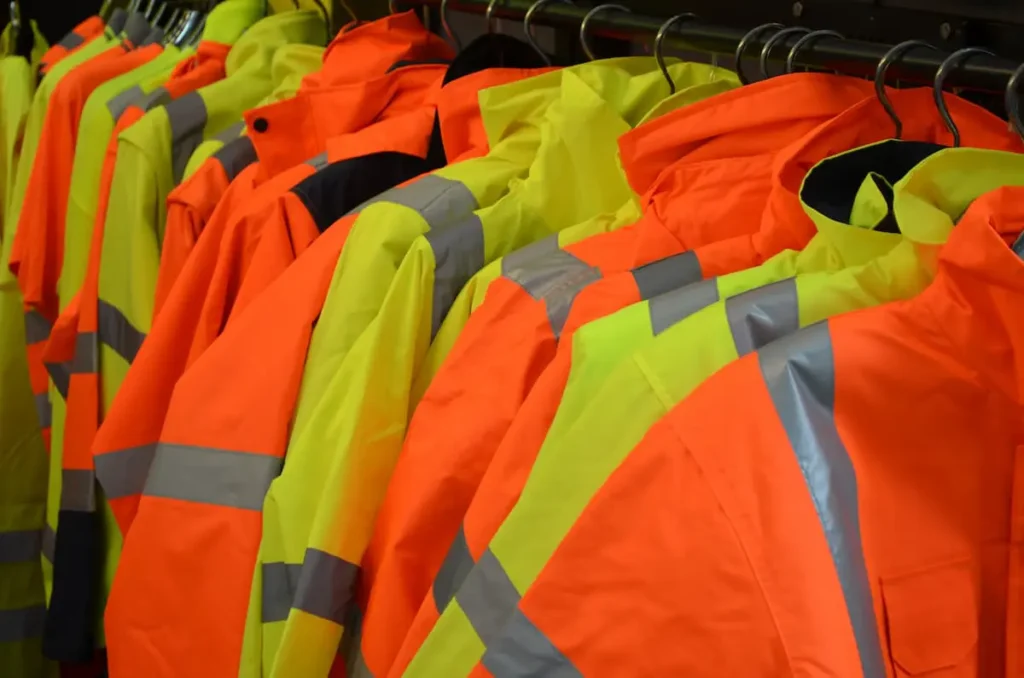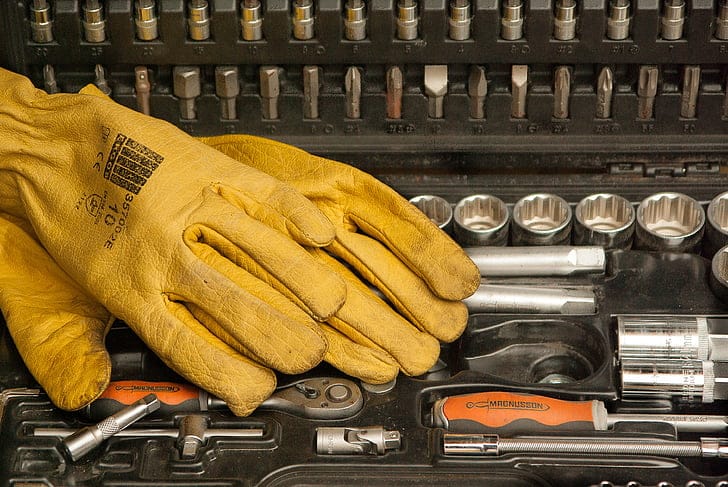
In food processing, gloves are more than hygiene tools—they’re critical for preventing contamination, injuries, and ensuring compliance. One wrong choice can lead to vast financial losses, product recalls, or worse.
This 5,500+ word buyer’s guide helps procurement professionals select the ideal glove type based on task requirements, contamination risk, material performance, and industry standards. You’ll learn how to balance cut resistance, grip, and food safety into your decisions.
The best gloves for food processing balance hygiene, cut protection, and grip. Use food-contact-certified nitrile or vinyl gloves for general hygiene, and add a cut-resistant layer (HPPE or steel mesh) when handling knives or sharp tools. Always ensure materials conform to EN 1186 or FDA 21 CFR standards.
Real-World Case Studies: When Glove Choice Made or Broke Safety
Case 1: Bakery Lysis—Cross-Contamination via Latex Liner
A bakery used latex inner gloves for better fit under cut-resistant mesh shells. An employee had a latex allergy; unnoticed, latex powdered particles transferred to pastries. Customer complaints led to recall. Switched to nitrile liners. — Lesson: Allergy-safe inner layers are non-negotiable.
Case 2: Poultry Plant—Cheap Gloves Trigger Major Recall
Loose-fitting, low-quality gloves began shredding under machine pressure. Glove fragments were found in ready-to-cook bags, causing a recall that involved litigation. According to industry analysts, recalls cost an average of $10 million in direct costs alone, not including brand damage :contentReference[oaicite:1]{index=1}.
Case 3: RTE Facility—Glove Chemical Contamination
At a ready-to-eat food facility, frequent unexplained spoilage was traced to ortho-phenylphenol (OPP) leaching from low-grade gloves. The vendor switched to certified clean nitrile. Spoilage stopped. — Key Point: Not all “food-safe” gloves are chemically inert :contentReference[oaicite:2]{index=2}.
Glove Types and Risk-Based Matching
| Glove Type | Best Fit | Benefits | Potential Drawbacks |
|---|---|---|---|
| Nitrile (Disposable) | General hygiene + wet tasks | Allergen-free, resistant to oils | No cut protection |
| Vinyl (Disposable) | Dry, low-risk tasks | Inexpensive, latex-free | Weak barrier, more porous |
| Poly (Powder-Free) | High-turnover zones | Cheap, single-use convenience | Thin, low durability |
| Cut-Resistant (HPPE/Mesh) | Slicing, deboning | High cut protection (EN 388) | Low dexterity, requires hygiene layer |
| Dual-Layer System | Combo tasks | Best of both—hygiene + safety | Higher cost, training needed |
Critical Standards for Food-Processing Gloves
| Standard | Relevance |
|---|---|
| EN 1186 | Ensures material does not migrate harmful substances |
| EN 388 (Cut Rating) | Classifies cut resistance from A to F |
| EN 420 | Defines glove fit, dexterity, and comfort standards |
| FDA 21 CFR 177.2600 | U.S. regulation for rubber-resin food contact safety |
Note: Always keep declaration of conformity (DoC) and supplier documentation accessible for audits.
Interpreting Cut Resistance (EN 388)
| Level | Use Case | Risk Reduced |
|---|---|---|
| A1–A2 | Light packaging | Minor peeling or paper cuts |
| A3–A4 | Slicing and shaping | Cuts from knives and straight edges |
| A5–A6 | Heavy deboning | Serious laceration risks |
| A7–A9 | High-speed meat deboning lines | Extreme cut resistance requirement |
Material Deep Dive: Technology Behind the Glove
| Material | Advantages | Considerations |
|---|---|---|
| Nitrile | Chemical/oil resistant, latex-free | Not cut-proof |
| Vinyl | Low-cost, no latex allergies | Low durability |
| Latex | Excellent fit, tactile feedback | Allergen risk, mostly phased out |
| HPPE Fibers | Lightweight, flexible, washable | Needs liner for hygiene |
| Steel Mesh | Highest cut protection (but heavy) | Weight and cost trade-offs |
Application-Based Glove Recommendations
| Task | Recommended Setup | Why It Works |
|---|---|---|
| Raw meat cutting | Nitrile + HPPE outer | Combo of hygiene and safety |
| Wrapping hot goods | Heat-resistant nitrile | Handles temperature + food safety |
| Poultry patting | Nitrile with textured grip | Reduces slipperiness |
| RTE packaging | Fresh, single-use nitrile or vinyl | Zero cross-contamination |
| Dry good inspection | Vinyl or poly | Comfortable, minimal hygiene risk |
Purchasing Challenges & Smart Solutions
| Challenge | Solution |
|---|---|
| Glove fragments causing recalls | Use quality certified suppliers |
| Hidden chemical contamination | Implement third-party testing (e.g., DeltaZero™) :contentReference[oaicite:3]{index=3} |
| Staff resistance to layered gloves | Conduct ergonomic trials and training |
| Lack of traceability | Label gloves by lot and store in zones |
Buyer FAQ—Deep Dive
-
Do I always need cut-resistant gloves?
Only in high-risk zones—line your decisions with HACCP mapping. -
Are color-coded gloves effective?
Yes—blue or red gloves improve identification and cross-zone control. -
How long can disposable gloves stay in use?
No more than 1 hour, or sooner if soiled/damaged. -
Can cut-resistant gloves be laundered and reused?
Many HPPE models are washable—save costs if sanitized correctly. -
Do all nitrile gloves resist grease and acids?
Not always. Verify with supplier chemical resistance data. -
What about environmental concerns?
Reusable gloves reduce waste but require sustainable laundering practices.
Procurement Checklist
- [ ] Identify tasks needing cut vs hygiene protection
- [ ] Select food-safe certified materials only (EN/FDA)
- [ ] Get EN 388 cut levels for cut glove zones
- [ ] Include inner hygiene layer for safety gloves
- [ ] Run small sample trials with staff
- [ ] Implement glove lifecycle tracking (batch, issue, disposal)
Conclusion
Selecting the right gloves impacts safety, compliance, and costs. A layered strategy combining hygiene and cut protection delivers both safety and productivity.
Start with mapping tasks, sourcing certified gloves, and providing staff training. If you want help selecting the ideal glove mix for your operation, drop me a line.
📩 Email: [email protected]
🌐 Visit: www.workwearsolutions.net
Zion Zhang
Recent Posts
 Technology in PPE: How Smart Features Are Changing Buyer Expectations2025年8月9日When I first saw a “smart helmet” at an expo in 2018, I […]
Technology in PPE: How Smart Features Are Changing Buyer Expectations2025年8月9日When I first saw a “smart helmet” at an expo in 2018, I […] Sustainability in PPE: How Eco Standards Are Reshaping Buyer Decisions2025年8月9日Five years ago, “eco-friendly PPE” was a novelty—something […]
Sustainability in PPE: How Eco Standards Are Reshaping Buyer Decisions2025年8月9日Five years ago, “eco-friendly PPE” was a novelty—something […] Post-Pandemic PPE Demand: What Buyers Should Expect in 2025 and Beyond2025年8月9日If you were in PPE procurement during 2020, you probably […]
Post-Pandemic PPE Demand: What Buyers Should Expect in 2025 and Beyond2025年8月9日If you were in PPE procurement during 2020, you probably […] Compliance and Certification Updates: What PPE Buyers Need to Know in 20252025年8月9日If you’ve been in PPE sourcing long enough, you’ve probably […]
Compliance and Certification Updates: What PPE Buyers Need to Know in 20252025年8月9日If you’ve been in PPE sourcing long enough, you’ve probably […] Regional Sourcing Shifts: Where PPE Production is Moving in 20252025年8月9日If you’ve been sourcing PPE for a decade, your mental map […]
Regional Sourcing Shifts: Where PPE Production is Moving in 20252025年8月9日If you’ve been sourcing PPE for a decade, your mental map […] AI in PPE Supply Chains: Smarter Sourcing and Inventory Management2025年8月9日Three years ago, if you had told a PPE buyer that […]
AI in PPE Supply Chains: Smarter Sourcing and Inventory Management2025年8月9日Three years ago, if you had told a PPE buyer that […]
CONTACT US
- Feel free to contact us any time. We will get back to you as soon as we can!
- +86-17330061805
